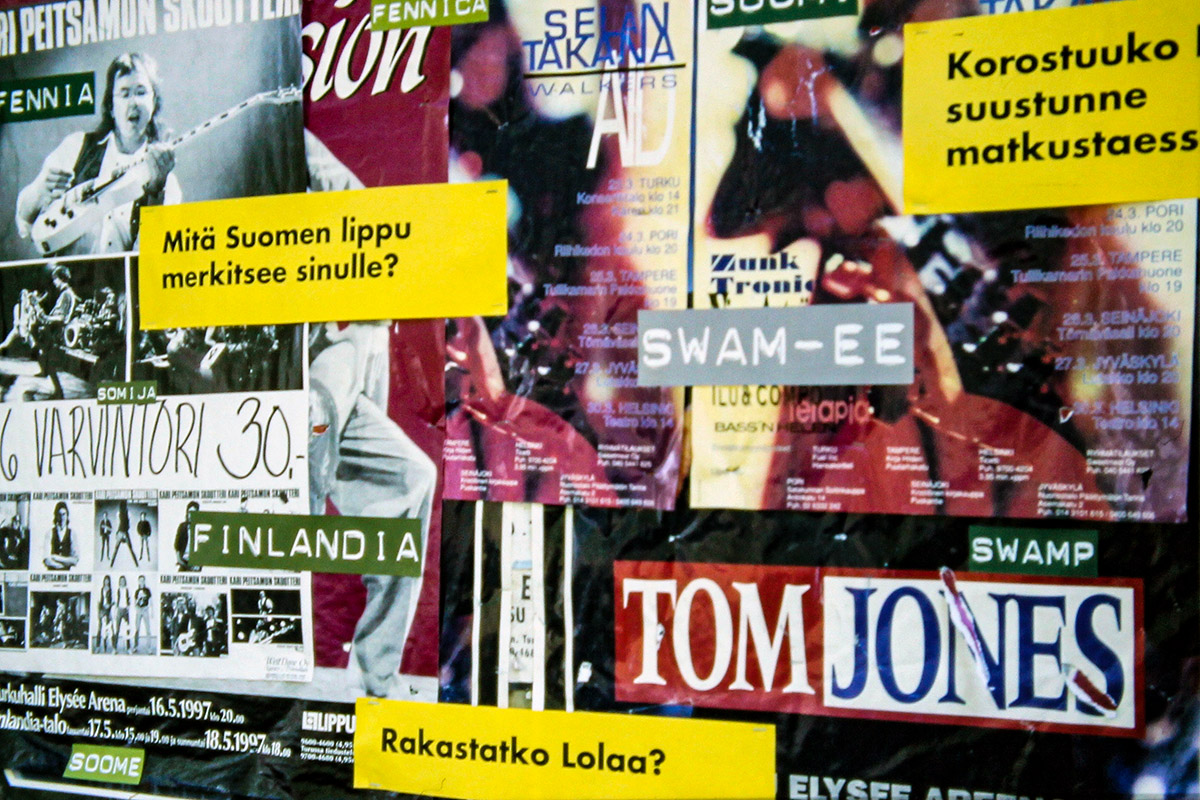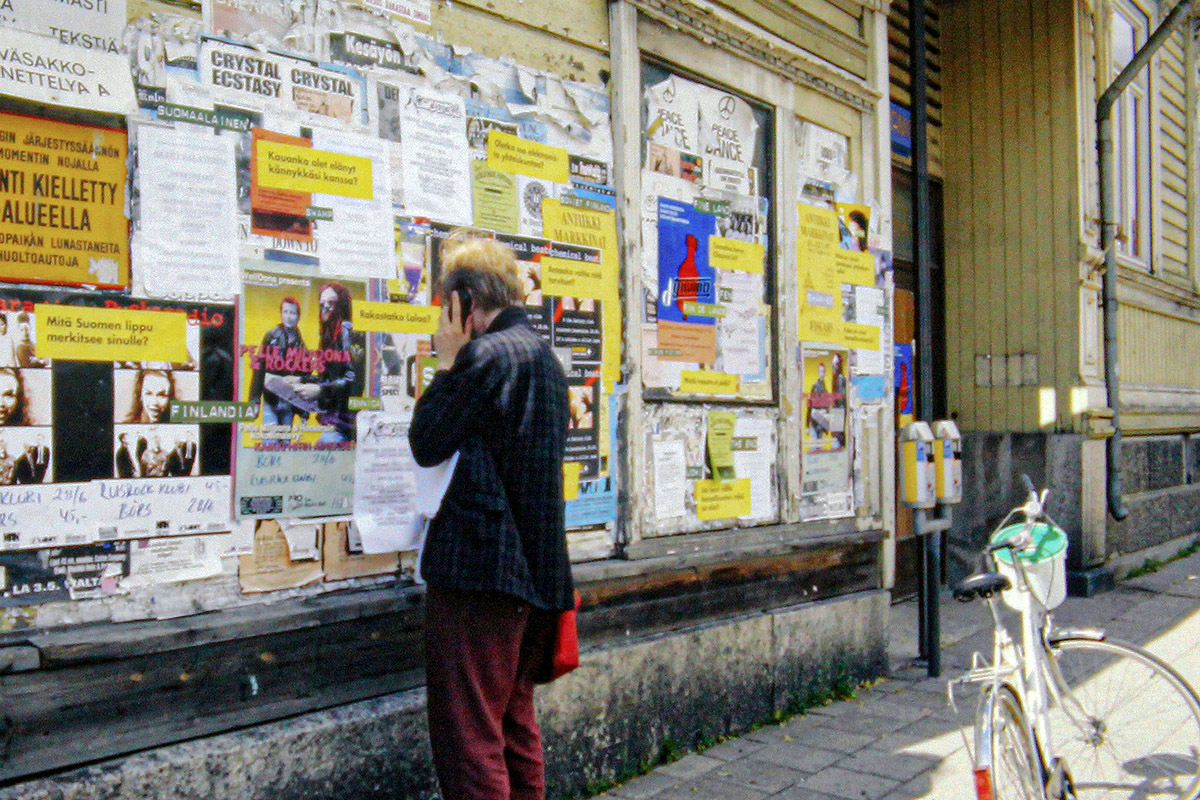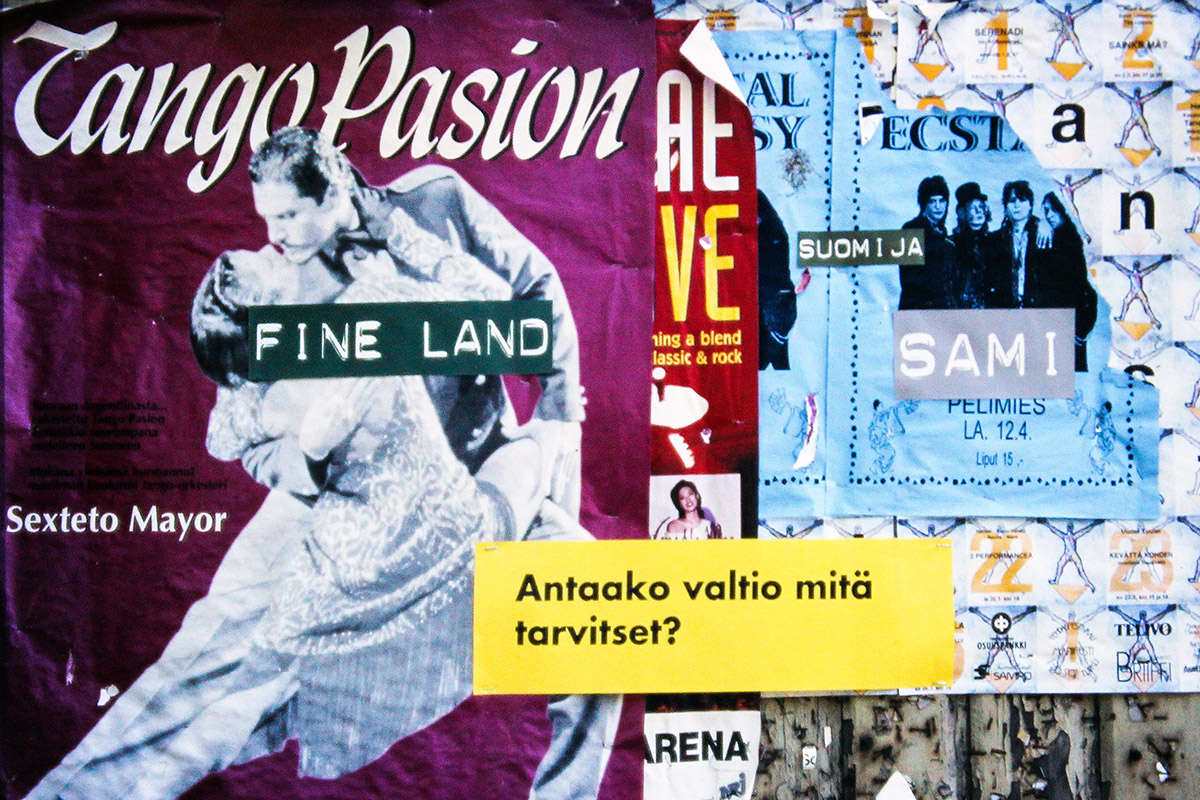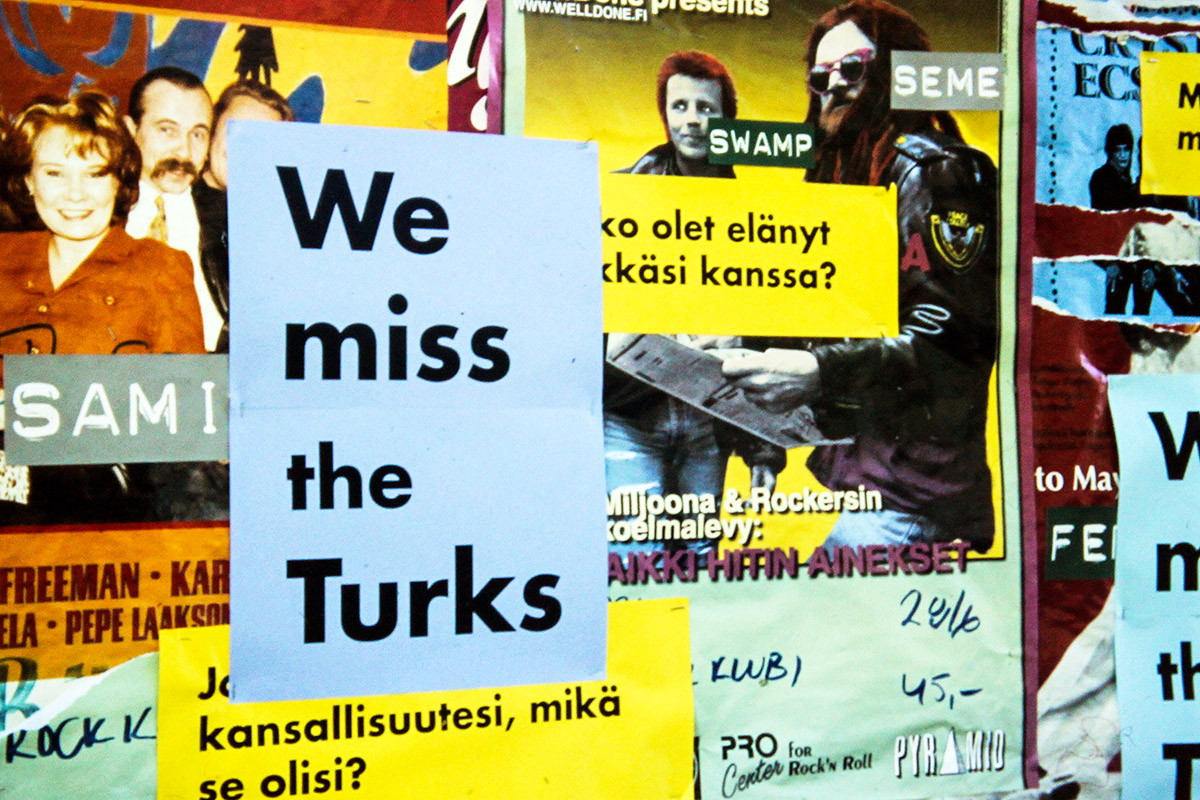Ed & Ellis in Turku is Tracy and Edwin’s first collaborative project, and used the poster sites in the Finnish town of Turku to provoke conversations about cultural and national identity.




Spread across Turku city in Finland and changing daily, the 1997 text posters functioned as parasites affecting the content of other people’s printed advertising material and expanded Tracy & Edwin’s own investigations into nationality (Tracy, Scots-Italian; Edwin, Dutch).
Turku, a town on the country’s west coast, is separated from Sweden by the Baltic and the Gulf of Bothnia. Finland’s two ‘national’ languages are Finnish and Swedish, and the official minority languages are three Sami languages, Romani, Finnish Sign Language and the Karelian language. The visual impression of a monocultural society was playfully provoked in slogans like ‘We miss the Turks’.
How Tracy & Edwin ended up in Turku was at the invitation of Tracy’s Finnish friend Mika Kavasto, a graphic artist met when living in Budapest at the end of the eighties. Whilst both learned Hungarian much of their English language discussion focussed on the relationship between the Finnish and Hungarian languages; they belong to the same linguistic family, but to recognise this requires linguistic expertise beyond the competence of the layperson. The Finnish languages are part of the Uralic language family, Finnish being distantly related to languages as diverse as Hungarian (an Ugric language) and Nenets (a Samoyedic language) in Siberia.
Perhaps even more difficult to reconcile with the Finnish temperament was the country’s love of tango music – evolved to its own form of Finnish Tango. An established variation of the Argentine tango, it cuts deep into the heart of the nation. Brought to Europe in the 1910s by traveling musicians, the Finns own form evolved since the 1930s and spread in the post war period from a popular urban phenomenon to eager adoption by rural areas too. The central themes of the lyrics are love, sorrow, nature and the countryside and express a longing for the old homestead, an imagined land of happiness, and the metaphors of Nature’s changing seasons.
The surreal nature of Tracy & Edwin’s time in Finland included the paradox of participating in a symposium whose focus was ‘communication’ in the visual arts, whilst discussion could only be given place in the early hours of the morning after copious amounts of alcohol had been consumed. Experiences were more alien even than those of their first immersive periods in Japan, heightened by the phenomenal use of mobile phones when Nokia was still an international leader, the devices substituting actual communication between people in close physical proximity.